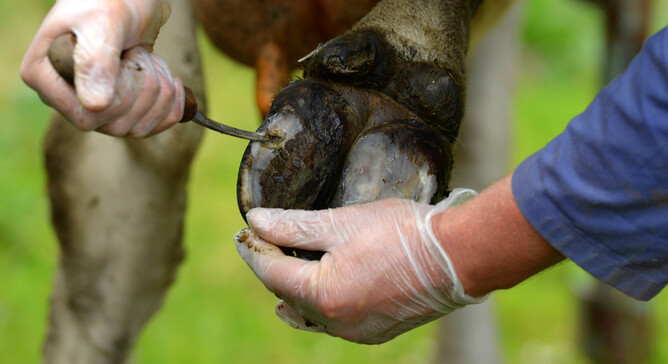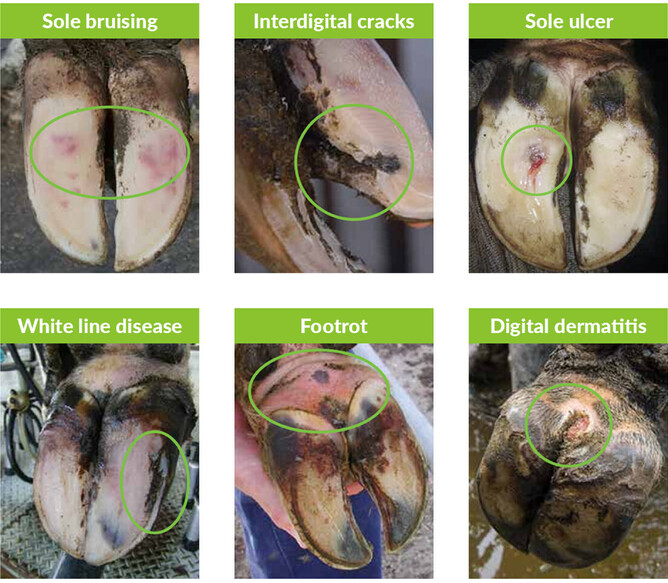New Zealand’s pasture-based dairy farming system, where cows graze in fields in all weather and walk fair distances along lanes to get to and from the milking shed, can increase the risk of lameness.
We know farmers work hard to prevent and treat lameness, so we’ve put together a guide to help you determine what type of lame cases you might be seeing on your farm.
Sole bruising
Reddish areas on the hoof sole indicating damage to the corium (the blood nutrient-rich layer directly underneath the sole). Time will heal with simple bruising.
Interdigital cracks
A crack in the inner hoof wall between the two claws. Trimming the area and a hoof block can help in most cases.
Sole ulcer
Damage to the hoof sole leading to an infection. May appear as a small crack and can track widely under the sole. Treat by removing all under-run sole. Use a block on the sound claw to take weight off.
White line disease
Damage in the junction between the hoof sole and hoof wall. Treat by trimming the hoof and all under-running sole to allow drainage. Use a block on the sound claw to take weight off. Antibiotics may be required in cases where the infection tracks deeper into the joint. In severe cases, a vet might need to consider regional antibiotic perfusion and/or claw amputation.
Footrot
An infection of the soft tissue above the hoof. The skin will be red, swollen and hot. Check for trapped stones. Treat with antiseptic spray and antibiotics.
Digital dermatitis
A superficial bacterial infection of the skin above the heel of the foot. There will be a grey or red sore, which can have a wart-like appearance. Treat with antibiotic spray. Note: this condition is contagious, so it can spread from cow to cow.
Hoof photos sourced from DairyNZ


